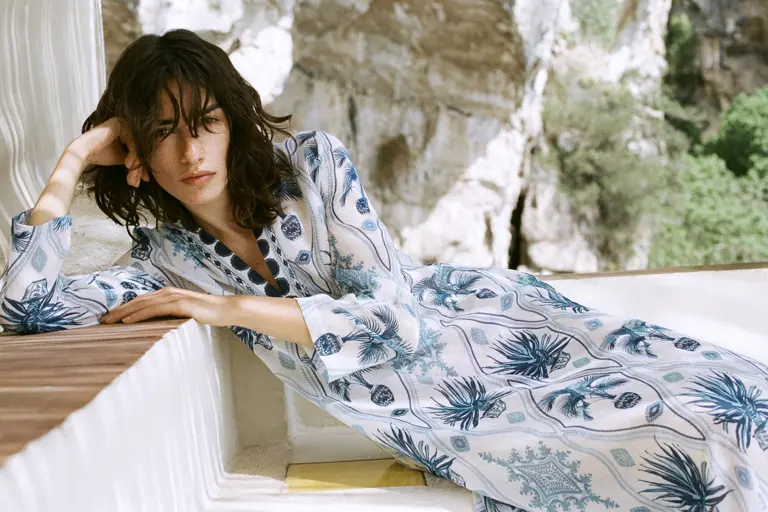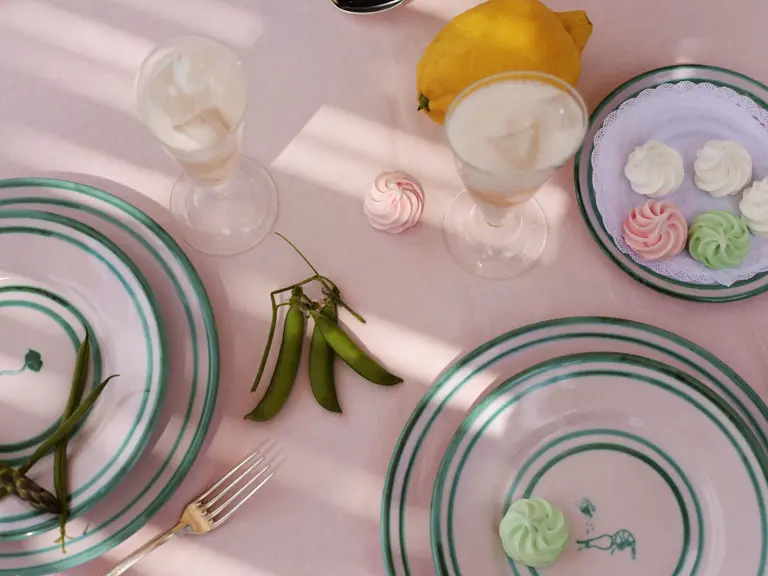EMPORIO INSPIRIO
03.06.2025 EMPORIO SIRENUSE
Positano emerges like the scent of summer from the resortwear collections designed by Viola Parrocchetti, creative director of the brand founded by Carla Sersale. Its shimmering light, its intense blues and dazzling whites, its weathered ochre walls, its seaside insouciance. Even its tendency – something of a Positano trademark – to pair elegant skirts and dresses with flat shoes or sandals.
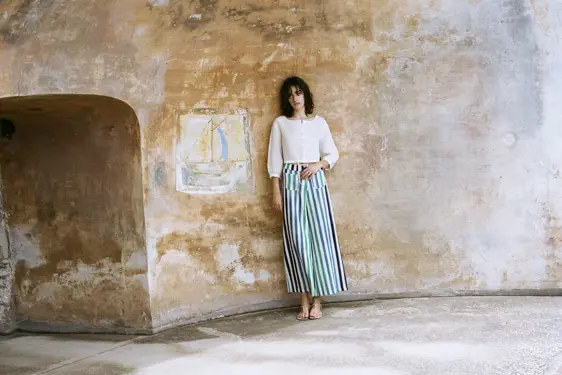
View
Parrocchetti’s design aesthetic also reflects a greater truth about the Amalfi Coast, one that Le Sirenuse’s arbiter of taste, the late Franco Sersale, passionately embraced. The towns and villages that line this steep, impervious shoreline may have been cut off from Italy’s main land routes – but their freeway was the sea.
In the early Middle Ages, merchants from Positano, Amalfi, Atrani and other coastal settlements sailed south and east across the Mediterranean, establishing colonies in cities like Constantinople, Jerusalem and Antioch, and importing spices, perfumes, silk and other precious goods. As late as the early 20th century, when this photo was taken, ships from Amalfi continued to roam far and wide.
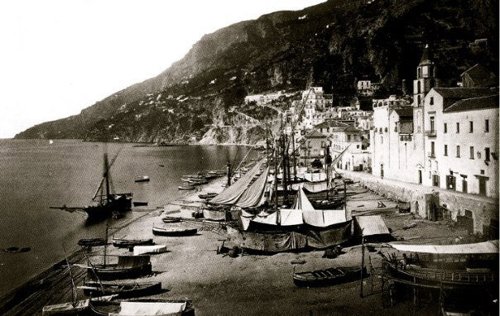
The exchange was cultural as well as mercantile. The vernacular architecture of the Costiera borrowed Islamic features such as ‘bread roll’ roofs and shallow cross-vaulted ceilings. The bronze doors of Amalfi Cathedral were forged in Constantinople in the 11th century. Its paper-making industry was based on techniques learned in Arab lands, and the geometric or nature-inspired motifs that are still today painted on the ceramic wares made in Vietri sul Mare evolved, in many cases, from North African, Middle Eastern and Ottoman models. Sicily, another crossroads of cultures, also had strong links with the Amalfi Coast. Later, when writers and artists from northern Europe began to frequent Positano, Capri, Ravello and other destinations south of Naples, the Mediterranean ‘otherness’ that still lingered in these remote places became part of a potent cocktail in which myth, legend and history intertwined.
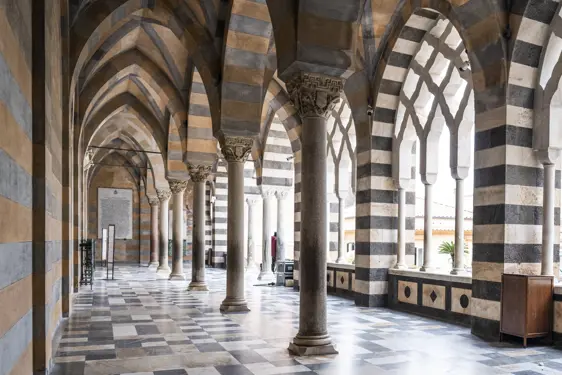
View
This heady mix of cultures and influences is fully reflected in Franco Sersale’s slow, patient transformation of the décor and ambience of Le Sirenuse from the late 1980s onwards. Alongside Neapolitan antique furniture – itself, in many cases, in debt to Ancient Greece, Ancient Rome, and the Eastern Mediterranean – there are Sicilian Baroque organ covers, characterful Calabrian ceramics, Spanish cabinets of Moorish design and an important collection of Suzani rugs from Central Asia.
The hotel’s verdant planting scheme, which blurs the distinction between inside and out, is another powerful trait d’union between Positano and the cultures of the southern and eastern Mediterranean.

So too is the colour scheme that Franco chose for the hotel. “For me”, Viola Parrocchetti tells the Journal, “the colours of Le Sirenuse are terracotta, sea green and Pompeiian red”.
The latter was the exterior hue of the hotel and the villa that preceded it for as long as anyone can remember, but Franco extended this deep red, associated with Ancient Roman wall paintings, to the walls around the pool terrace, which had previously been painted a shade of yellow ochre.
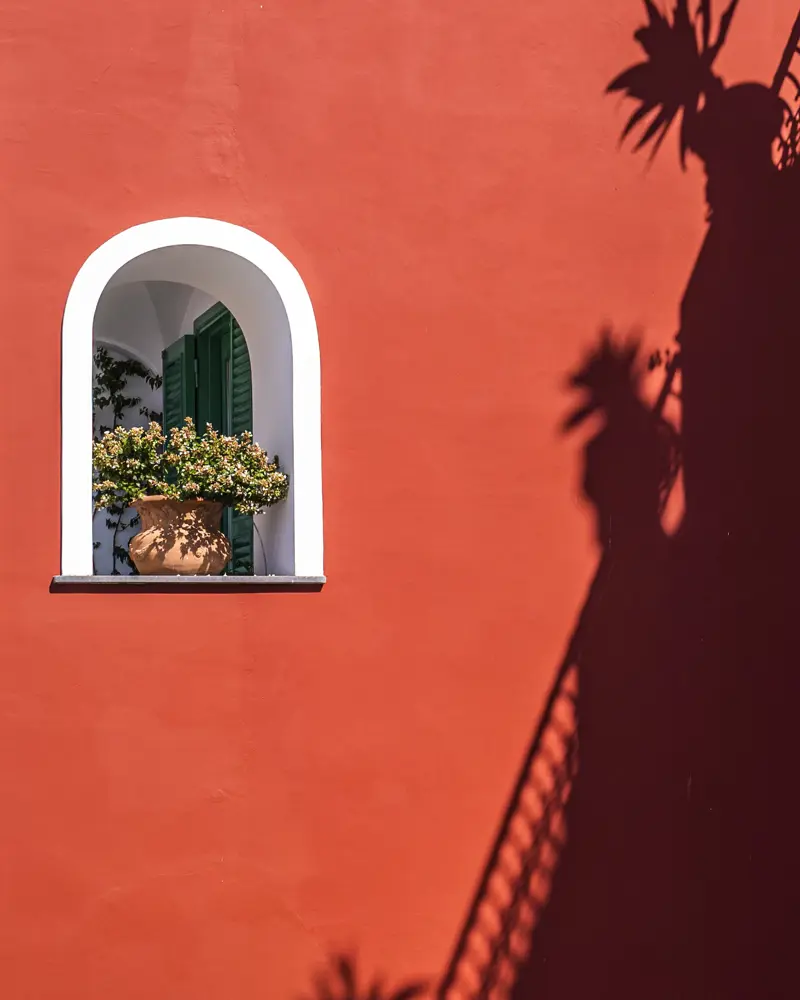
As for terracotta and sea green, they emerge most obviously in the floor tiles Franco designed with historic family-run ceramics firm Fornace De Martino for the La Sponda restaurant and the external terrace and pool area. Inside, the pattern is green with a terracotta border; outside, the colours are inverted.
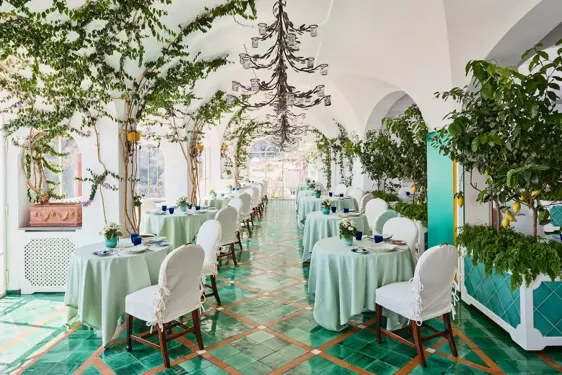
View
The same hues play a game of tag on the Tribal Botanic print that features on dresses, caftans and trousers in Emporio’s Sirenuse’s High Summer 2025 collection. A fusion of Southern Italian garden motifs and abstract elements from Eastern art, this eye-catching print is alive with symbols of Positano’s Mediterranean outreach. There are long, sinuous towers that resemble the ‘points’ on a backgammon board, palms and agaves in decorative ceramic pots, green discs that recall inlaid marble motifs from Ancient Greek temples or Byzantine church interiors.

“I love history”, Viola confides. “I’m constantly reading books about ancient cultures. Right now I’m reading up on early Christianity in the Roman Empire”. She admits to feeling an affinity with Franco, an inveterate traveller and skilled photographer who was drawn above all to destinations across Asia, from Turkey to China. Like Franco, Viola backs up her in-person travels with background reading and museum visits. Unlike Franco, an old-school signore who passed away in 2015, she also circumnavigates the globe online to gather ideas and inspirations.
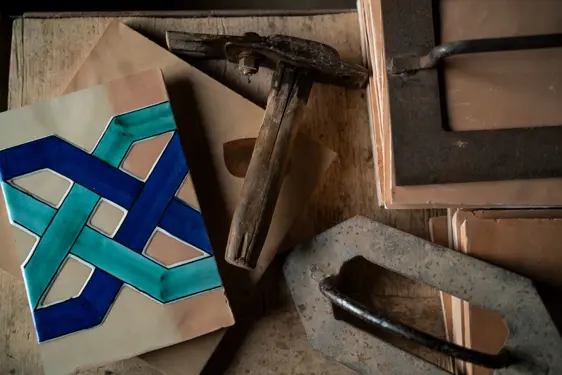
View
“I do a lot of pictorial research”, Viola explains. “I look at museum collections, both in person and online, I check out the posts of archaeologists and archaeological sites, I browse the Instagram pages of artisans, collectors, design stores, specialists in the decorative arts of the past and present. Some of the accounts I follow are from places where I don't speak the language – Turkey, Persia, the Islamic world, India – but images are a universal language".
“Some motifs, patterns, colours and compositions will inspire me, and I will use them to create collages that then feed into the finished patterns of the Emporio Sirenuse collections”.
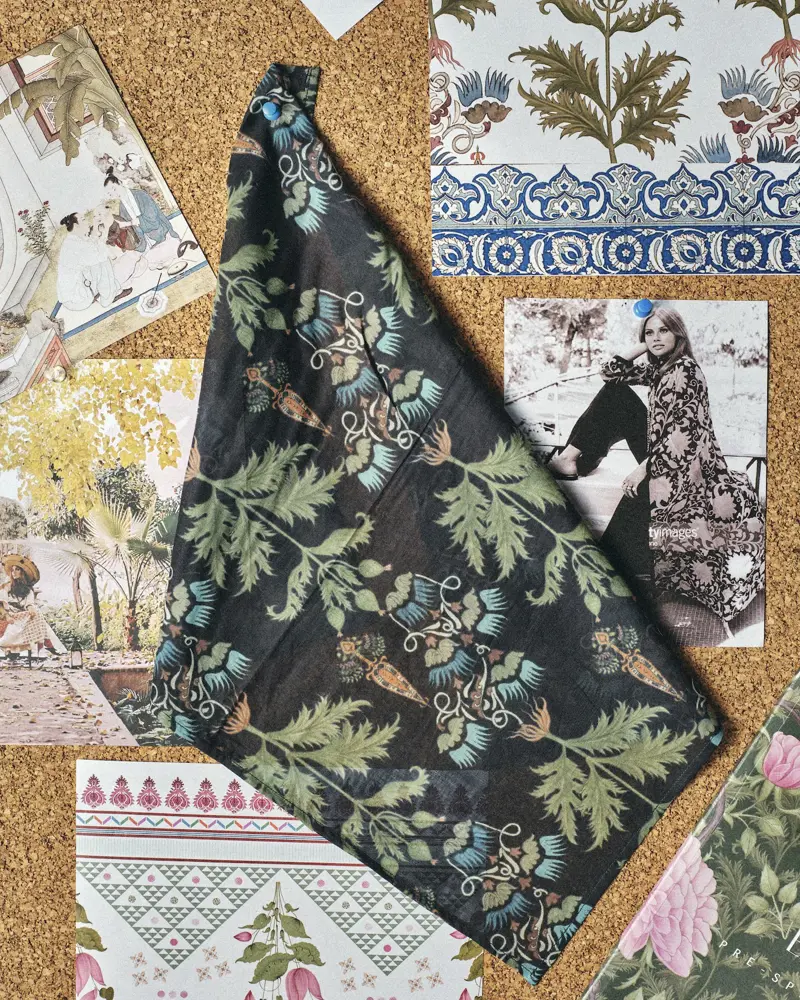
The lines of influence between Le Sirenuse and the Positano-born fashion brand are perhaps most strikingly evident in Emporio Sirenuse’s iconic cushion covers, inspired by the ancestral circular motifs on the Suzani rugs and wall hangings that Franco Sersale loved to collect. More recently, they have been reproduced on a stylish set of plates and bowls, hand-crafted in Vietri sul Mare. Another tableware collection, By The Pool, is based on some of the playful marine-themed drawings by Cornish artist Lucy Stein that line the stairs leading down from the restaurant.
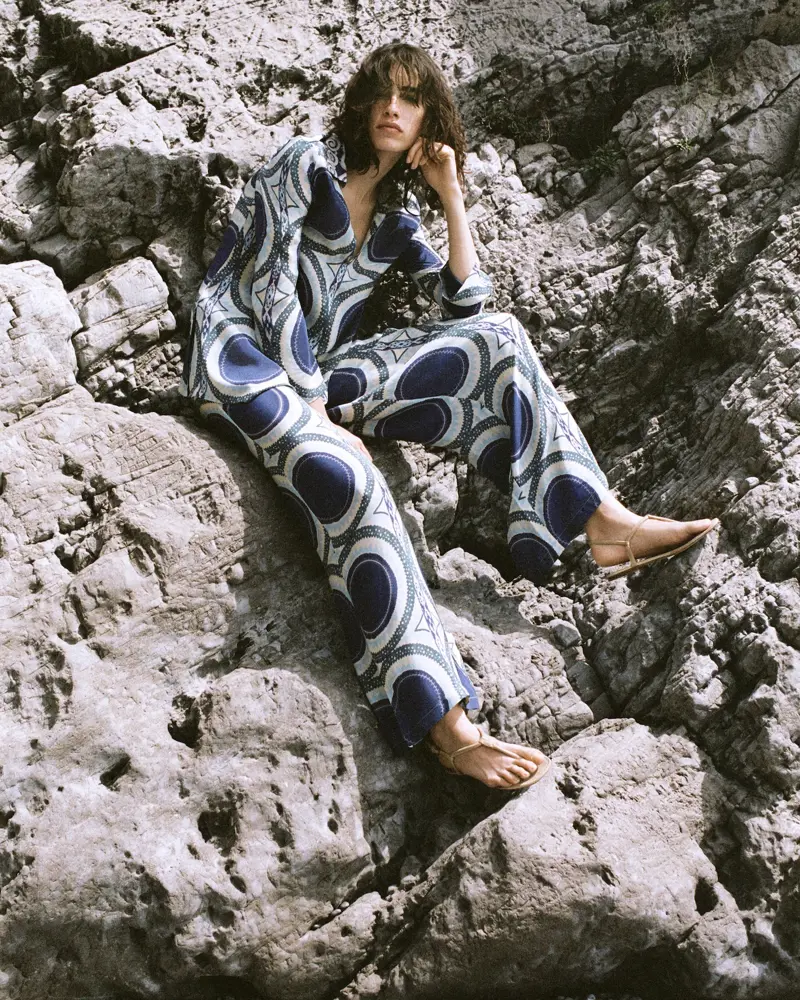
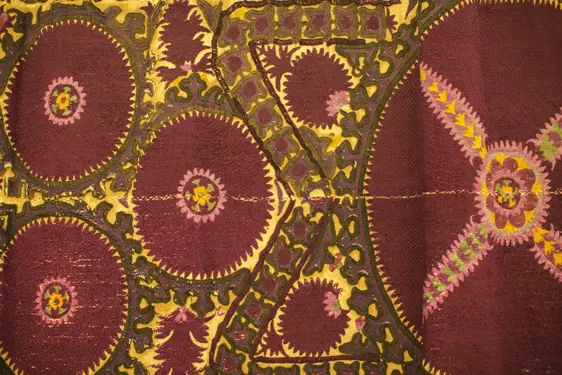
View
But there’s another, deeper connection that is not obvious from a cursory glance. Franco was a profound admirer of cultures that prized quality artisanship, exalted the handmade, and gave preference to natural materials and textiles. This is one of the reasons why he spent so much time in India. It was while travelling in Rajasthan that he came across the region’s miniaturists, talented artists trained in a school of painting that can trace its roots back to the 16th century.
One day, he had the idea of asking a school of Indian artists that he particularly admired to make copies of a series of European 18th and 19th-century prints he owned showing birds, animals, fish and plants. The results exceeded his expectations, and more were ordered. Franco had these exquisite works framed and hung in the corridors, staircases and rooms of Le Sirenuse, where they can still be admired today.

Viola too finds herself inexorably drawn to the Indian subcontinent. “Every time I’ve visited I’ve taken to it like a fish to water”, she remarks. “It’s full of incredible artisans who produce exquisite work using the simplest materials and means”, she adds, “which are perfect matches for Emporio Sirenuse”. As in the ceramics workshops of the Amalfi Coast, entire communities, she explains, are often involved in the creative process. “Most of our linen and cotton voile textiles are made in Bengal by ‘firms’ that are in fact villages, in which one family specialises in spinning, another in dyeing, and so on”.

Delicate, detailed silk embroidery – an Emporio hallmark from day one – is carried out in Bengal and Bombay, while another of the brand’s icons, ikat resist-dyed textiles, are made in three workshops in the southern Indian state of Orissa.
It was when Viola contacted Sachin Kothari that the Franco connection became real and direct. The director of a Fine Art school in Udaipur, Sachin had been Franco’s contact for those nature paintings that today hang all over Le Sirenuse. “He remembered Franco well and was thrilled to be working with the family again”, she says. Viola asked Sachin and the young artists he works with to hand-paint a series floral and animal motifs that had emerged from her pictorial research. She then transformed these exquisite analogue works into a series of digital collages that formed the basis of the prints and embroideries in Emporio Sirenuse’s Pre Spring 2025 collection, which is still available at the online store.


The hand crafting of these garments in India was the final stage in a meeting of minds and cultures that has always been central to what Le Sirenuse is and does – and to the values of the Amalfi Coast, a remote coastal enclave that for millennia has been a place where ideas, goods and cultural inspirations are exchanged.
Shop the Emporio Sirenuse collections at the stores in Positano or online.
Photos:
© Roberto Salomone: Amalfi Cathedral cloister, Le Sirenuse walls and plants, Fornace De Martino tiles and tools, Suzani rug detail
© Brechenmacher & Baumann: La Sponda restaurant
© Art Partners: Emporio Sirenuse HS25 collection
© Gianluca Bellomo: Emporio Sirenuse collages, prints and textiles
© Sergio Ghetti: Bengali silk weaver
© Lee Marshall: Dove painting, Le Sirenuse
Le Sirenuse Newsletter
Stay up to date
Sign up to our newsletter for regular updates on Amalfi Coast stories, events, recipes and glorious sunsets
